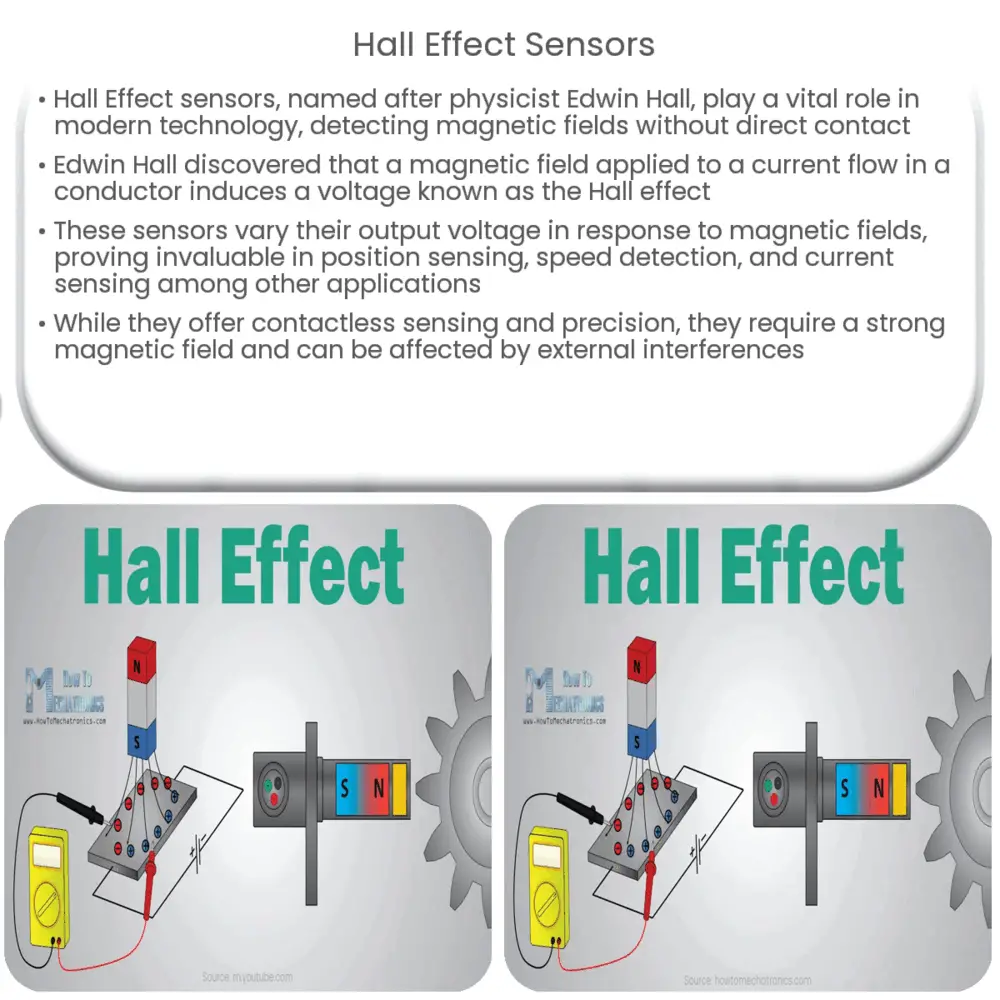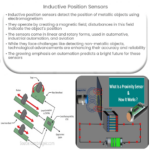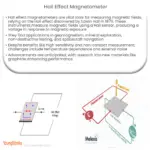Explore the fascinating world of Hall Effect sensors, their working principle, various applications, advantages, limitations, and future prospects.

Introduction to Hall Effect Sensors
The world of sensor technology is wide and varied, with a plethora of devices that make our modern world functional, efficient, and safer. Among these devices, the Hall Effect sensor holds a significant position. Named after Edwin Hall, the American physicist who discovered the Hall effect, these sensors are a fundamental component in numerous applications.
The Hall Effect: A Brief Overview
Before we delve into Hall Effect sensors, it’s essential to understand the principle that enables their function – the Hall effect. In 1879, Edwin Hall discovered this phenomenon while conducting experiments with a thin sheet of gold. He found that when a magnetic field is applied perpendicularly to the direction of current flow in a conductor, it causes a voltage to be induced at right angles to both the current and the magnetic field. This is now known as the Hall voltage or the Hall effect.
Working of Hall Effect Sensors
At its core, a Hall Effect sensor is a transducer that varies its output voltage in response to a magnetic field. The sensor incorporates a thin strip of a conductive material, such as copper or semiconductive material. When the sensor is powered and a magnetic field is present, the Hall effect induces a voltage across the conductor. This voltage can be measured and corresponded to the magnetic field strength, allowing the sensor to effectively “sense” the magnetic field.
- The sensor is supplied with a constant current.
- A magnetic field perpendicular to the current induces a Hall voltage across the conductor.
- This voltage can be measured and corresponded to the magnetic field strength.
Importantly, the polarity of the induced Hall voltage will change with the direction of the magnetic field. This characteristic is particularly useful in applications that need to detect the direction of magnetic fields, such as the sensors used in anti-lock braking systems in vehicles.
Applications of Hall Effect Sensors
Hall Effect sensors are highly versatile and find use in a wide variety of applications, ranging from consumer electronics to industrial machinery, and even in aerospace technology.
- Position Sensing: Perhaps the most common application of Hall Effect sensors is in position sensing. By placing a magnet on a moving part and a Hall Effect sensor on a stationary part, the relative position of the moving part can be determined by the change in the sensor’s output voltage.
- Speed Detection: In automotive applications, Hall Effect sensors play a crucial role in speed detection systems, such as wheel speed sensors used in anti-lock braking systems. They can also be used to detect the RPM of motors in various industrial applications.
- Current Sensing: Due to their inherent characteristic of voltage output in response to a magnetic field, Hall Effect sensors are commonly used for current sensing. When current passes through a wire, it creates a magnetic field around it. This can be detected and measured by a Hall Effect sensor, allowing for non-invasive current sensing.
- Switches: Hall Effect sensors can act as magnetic field-triggered switches. When the magnetic field reaches a certain threshold, the sensor can trigger a switch, useful in applications such as door alarms or safety interlocks.
To be continued…
More Applications of Hall Effect Sensors
Advantages and Limitations of Hall Effect Sensors
As with any technology, Hall Effect sensors come with their advantages and limitations. On the plus side, they offer contactless sensing, which means less wear and tear, resulting in a longer lifespan. They can function over a wide range of temperatures, making them suitable for harsh environments. They also offer a high level of precision and can work with both AC and DC currents.
On the other hand, one of the main limitations of Hall Effect sensors is that they require a relatively strong magnetic field to operate. This can limit their sensitivity in certain applications. Additionally, they can be affected by external magnetic fields and electrical noise, which can lead to inaccurate readings.
Conclusion
In conclusion, Hall Effect sensors are invaluable tools in modern technology, providing reliable and precise sensing in a wide range of applications. Their ability to detect and measure magnetic fields without direct contact gives them an edge in durability and longevity. Despite some limitations, their benefits significantly outweigh the drawbacks, making them a preferred choice in numerous industries. As technology continues to evolve, it’s likely that we’ll see even more innovative applications of Hall Effect sensors in the future.




